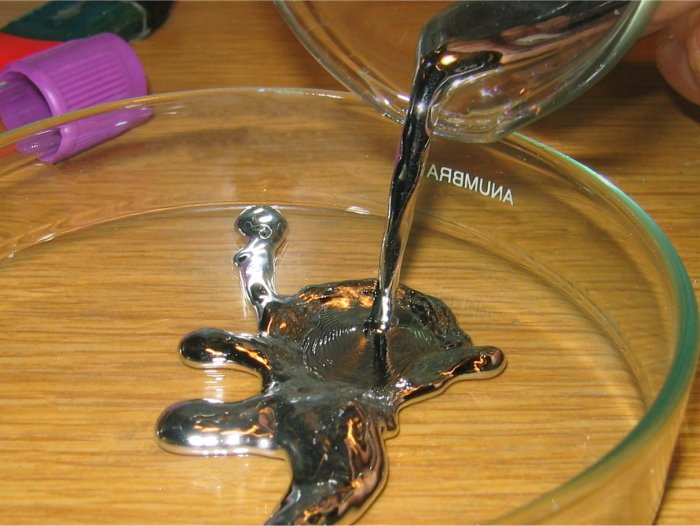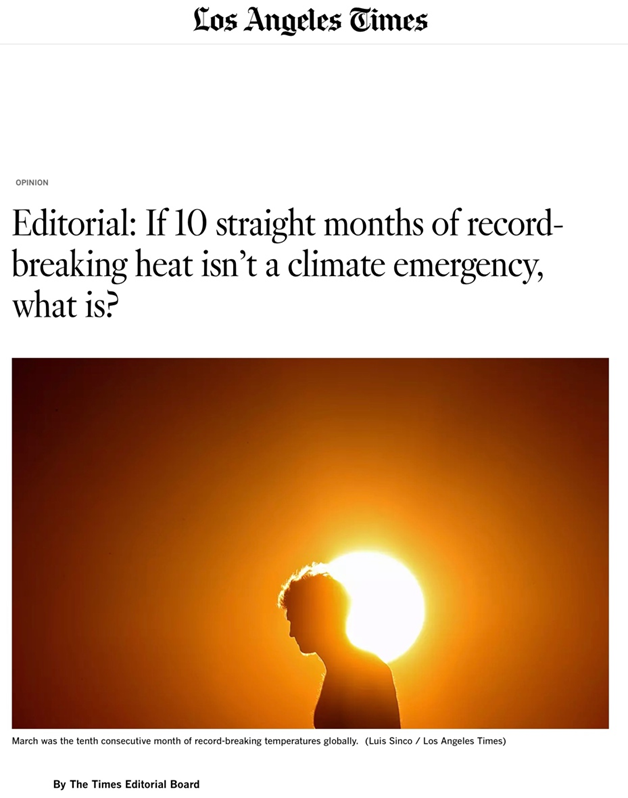https://motls.blogspot.com/2018/02/permafrost-mercury-alarm-is-shameful.html?m=1
By Dr. Lubos Motl
It seems that other climate skeptics haven’t dedicated much attention to this particular recent mania but I was intrigued and disgusted, so here is my reaction.
You need about 1,000 tons of the Arctic soil to extract this much (43 grams) of mercury.
National Geographic and most other science news outlets have informed us that there is a lot of mercury underneath the thawing Arctic permafrost and when it thaws, all of us will get poisoned to one extent or another. Will we?
The popular articles build on an article in Geophysical Research Letters,
by Paul Schuster (USGS Boulder) and a dozen of co-authors. What does the paper say?
The first words of the abstract say:
Changing climate in northern regions is causing…
Well, one can see pretty clearly where the authors are coming from and where they’re going. They’re supposed to talk about natural mercury but the first two words of their abstracts are “changing climate”. This paper is obviously a real-world example of the articles about squirrels, by squirrel experts who want to get lots of funding so they write articles about poor squirrels who may suffer because of global warming.
I think it’s clear that they’re this corrupt and if I were a judge and people were waiting for my signature under the death penalty for these “scientists”, it would probably be a formality.
OK, how much mercury is there? The permafrost regions contain 1.6 million tons of mercury (they use “gigagrams” to sound really fancy) and one-half of it is frozen in the permafrost itself. The relative error margin of the “1.6 million tons” figure is 6%, the relative error margin of “one-half” is a whopping 60%. Fine, so some fraction comparable to 1/2 of the permafrost-region mercury is frozen in the permafrost itself. What a shock.
1.6 million tons is negligible relatively to the mass of Earth or the atmosphere, of course, and it’s high for such a toxic substance. However, it’s low for a toxic substance per whole globe. Most of it won’t get to anyone’s intestines. You know, mercury is some 13.5 times heavier than water and it doesn’t want to fly too much. It’s pretty hard for it to get from the soil to some more dangerous places because the mercury wants to get down most of the time.
When we burn coal, we allow some mercury to “fly” because the mercury gets mined along with the coal and it’s burned. These authors tell us that the frozen mercury in the permafrost has a larger total mass than all the mercury in other soils, oceans, and the atmosphere combined. So they hype this comparison. But the comparison is completely neutral emotionally as long as you’re at least slightly rational. One of the places must be the leader in the total amount of mercury. OK, it’s the permafrost. If it were the ocean, the atmosphere, or the European soil, one could surely announce the finding with an equally hysterical or more hysterical pitch, too. If the atmosphere has less mercury, it actually shows one thing: that the burning of coal is less important when it comes to mercury than some natural backgrounds.
These amounts of mercury at different places haven’t been known from the time of cavemen. Someone had to learn their rough values for the first time. Well, each of them could be millions of tons or billions of tons or just tons. The answer is whatever it is and we just learn what it is – it is a boring technicality in a natural science that helps us to know some details about how the world works. And we know it works. This lesson cannot possibly poison the world. We know that the world isn’t dying because of the mercury in the permafrost now, so whatever the number is and whatever the ordering of the reservoirs of natural mercury is, it’s neutral news. If they have found trillions or vigintillions of tons, we would know that trillions or vigintillions of tons of mercury are compatible with the life as we know it, too. Any fear or concern that someone pumps into announcement of these boring numbers is either irrational or deliberately deceitful or both.
But corrupt pseudoscientists such as these try to sell any number and any ordering of the reservoirs as terrible news and as a justification for their sponsors’ greater powers. And their sponsors keep on paying for that.
There’s a lot of soil in the frozen permafrost, right? So how much mercury do you get if you just pick a gram of the soil? Well, according to the paper, it is
Their minus first power and the absence of the parentheses made it harder to read what they meant but I think that they meant this. There are some 40 nanograms (plus minus a whopping 75%) per gram of the soil. OK, is that a scary reservoir of lots of the toxic element that will poison all of us and all animals in the region?
Just think a little bit. Imagine you want to get poisoned by the permafrost mercury – which is a neurotoxin etc. The easiest way to get poisoned seems to go there, melt the permafrost, and just eat the soil, OK? How much soil from that region do you have to eat to be doing an unhealthy thing?
According to the U.S. Environmental Protection Agency, an adult may safely eat 20 micrograms of mercury per day – some 7.5 milligrams per year or over 0.5 grams or 0.4 grams per 50 years (that’s a reason to think that even with 20 dental fillings, you’re probably not get poisoned too much because each filling has below 1 gram, they have 20 grams in total, and their mass probably doesn’t lose more than 2% per lifetime – but just to be sure, with 20 fillings, I am getting rather close to the limit).
OK, to calculate how much permafrost soil you may eat every day, just divide 20 micrograms by “40 nanograms per gram of soil”. You get 500 grams of soil. So only if you visit the Arctic region and eat one pound of the melted soil every day over there, you start to approach the potentially dangerous levels of mercury according to the EPA. Why would you eat a pound of some dirty soil every day?
Clearly, there’s no sensible way how you could get poisoned accidentally yet directly.
You could eat some sharks that have concentrated the mercury in their flash, as the ultimate predators in the food chain. But how will the permafrost mercury get to the bodies of the sharks? As I mentioned at the beginning, the heavy mercury must first get “off the ground” which is not easy at all. Then someone has to eat it – the mercury will prefer not to go into plants because it’s so much heavier than water (even than heavy water LOL).
It makes no sense. We know that no such dangerous processes of poisoning are taking place – because none are taking place now. The authors promise their sponsors to dedicate “next stage of their research” to the investigation how this permafrost mercury will poison us all. They basically indicate what they want the conclusion of their next research to be. Except that if they’re reasonable, they must know that it’s at least extremely hard for the mercury to get from the permafrost to dangerous places.





